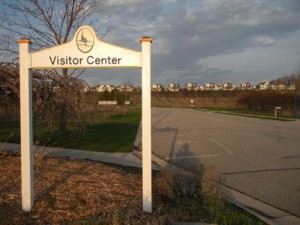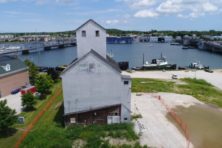Strange Bedfellows: As development surged in Door County, an age of preservation blossomed
- Share
- Tweet
- Pin
- Share
The hillside overlooking Egg Harbor is dotted with condominiums and vacation homes, each carved into a little plot where never-ending rows of apple and cherry trees once grew.
To many residents and visitors, such visions are evidence that Door County has been over-run by development, evidence that the people of the peninsula have failed to tame greed and steward an environmental treasure.
$43,750,000 has been spent to preserve land in Door County for conservation or public access in the last decade.
But a closer look reveals that what most consider an era of unchecked development, could also be called Door County’s age of preservation.
In the past 10 years, villages, towns, the County of Door, Wisconsin Department of Natural Resources and preservation organizations have anteed up to protect land and expand public access. How large has that commitment been?
Well, we could measure it in dollars – $43,750,000 to be precise. According to the Door County Real Property Listing Department, that is how much has been spent in the last decade to purchase some of the county’s most scenic and important ecological properties for preservation and public use.
Another measure is acreage. Those purchases have brought nearly 5,000 acres into the public domain. Most of them are open for hiking, skiing, kayaking, and other low-impact activities. Select sites offer swimming, boating, biking and other activities.
To put that number in perspective, it’s 32 percent more land than lies within the boundaries of the 3,776-acre Peninsula State Park.
.
A final measure is shoreline frontage. Waterfront property is the most coveted on the peninsula and increasingly hard to come by. Yet in the face of rapid condominium and vacation home development, 18,255 feet of Lake Michigan shoreline has been opened to the public.
Gone unnoticed is the fact that more shoreline is open to public access today than at any time since the 1800s. The Village of Sister Bay has added 371 feet to its public beach when it purchased the Helm’s Four Seasons property for $4.9 million in 2007. Last month, it added another 292 feet of shoreline to its Waterfront Park when it shelled out another $5 million for Al Johnson’s Boutique and Marina. Also in 2007, the Village of Egg Harbor bought the Troup property, located adjacent to its public beach, doubling the size of the beach.
This age of preservation has brought the total amount of preserved land in Door County to 29,240.13 acres, according to the Door County Real Property Listing. That’s approximately 9.5 percent of the county’s total acreage. It’s an impressive number, but Laurel Hauser of the Door County Land Trust said the county still lags far behind the eastern shore counterpart it’s often compared to.
“Cape Cod has protected about a third of its land mass,” she said. The Compact of Cape Cod Land Trusts reports that 30 percent of the region’s land mass is considered protected open space as of 2007. The Door County Land Trust will celebrate its 25th anniversary in 2011, proud to have protected over 5,000 acres to date. “But that’s only 1.5 percent of the county’s total land mass, so we have work to do,” Hauser said.
Purchasing land for conservation or public use is not always popular. It takes land off the property tax rolls (though the Land Trust pays taxes on some of its properties and public entities sometimes make Payments in Lieu of Taxes) and when municipalities buy land the cost is borne by property owners.
Officials often find themselves caught in a catch-22. If a town or village buys a property, they get slammed for spending public dollars and taking land off the tax rolls. If they pass up an opportunity to buy land and it becomes condos or shops, they get slammed for being shortsighted. Before the Sister Bay Village Board met to vote on the Al Johnson’s property purchase last month, board President Denise Bhirdo said she hoped residents would recognize the long-term implications of a no vote.
“If we don’t buy it, in 20 years I think people will regret it,” she said before the board met to vote on the proposal.
Even beloved Peninsula State Park had its detractors. Today, it is perhaps the county’s defining landmark, but when it was proposed in 1908, the Green Bay Press Gazette opposed its creation, while the Door County Advocate expressed reservations. H.R. Holand, the noted Door County historian, was vehemently against it.
Today one would be hard-pressed to find a single person who would criticize that decision on financial or environmental grounds. Though the land would be valuable in private hands, it has proved a boon to tourism and increased the value of property throughout the area. That’s a pattern Sister Bay hopes its $10 million waterfront gamble will repeat.
Village Administrator Bob Kufrin has said that the opening of the waterfront should spur development across the street from the park and increase property values elsewhere in the village. With several vacant stores and prominent empty lots, his vision is hard for some to see.
“It’s hoped that over the long term the village will reap the benefits of property tax revenues and the strengthening of its downtown business district,” he said when the deal to buy the Al Johnson’s property was made public.
Development and preservation seem to be diametrically opposed ideas, so why has preservation surged in the face of what once seemed a relentless onslaught of residential development? Certainly, that surge created a sense of urgency to preserve, but it also made much of it possible.
Yes, development like that in Egg Harbor has scarred many treasured vistas, bluff-tops and shorelines. But residential development is not the first industry to blanket the county’s landscape. In fact, it doesn’t approach the impact the logging industry had in just a couple decades in the late 1800s, when it clear-cut nearly the entire county. It was that logging that paved the way for the orchards and farms that dominated the landscape in the middle of the 20th century.
Ironically, today it’s the development of expensive homes and condominiums that has provided the tax revenue to pay for the expensive public purchases made by the County of Door and its municipalities. And it’s those parks and protected places that increase the value of those homes and condominiums.
The age of preservation and the era of development, strange bedfellows in Door County’s latest evolution.




